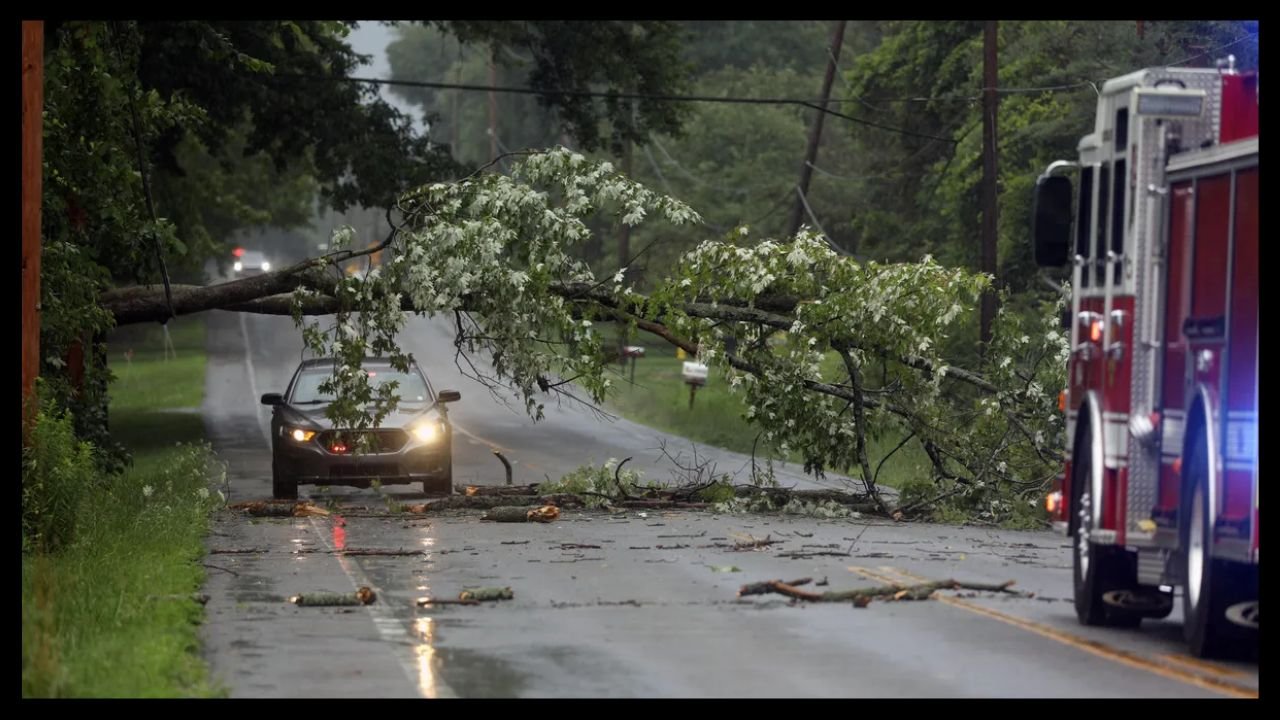Natural disasters aren’t just statistics—they affect real people, homes, and communities. With a recent tornado watch issued for Western Pennsylvania counties, residents must remain vigilant and prepared. This weather event reminds us that understanding precautions, taking proactive steps, and staying informed could make the difference between safety and tragedy.
This blog has everything you need to know about what a tornado watch means, how to prepare for it, and how to keep your loved ones safe. Whether you’re a resident in the region, a weather enthusiast, or someone interested in emergency preparedness, this guide will equip you with essential knowledge and actionable tips.
What Does a Tornado Watch Mean?
A tornado watch is not the same as a tornado warning. While both are critical alerts, they differ in meaning and urgency.
Tornado Watch vs. Tornado Warning
Tornado Watch
When meteorologists issue a tornado watch, conditions are ripe for severe storms and tornado development. This does not guarantee that a tornado will occur, but residents should stay alert and prepare for the possibility.
Tornado Warning
A tornado warning, however, means a tornado has already been spotted or detected on radar. Take action immediately if a warning is issued.
Understanding these distinctions ensures you’re not caught off guard and can respond appropriately.
How is a Tornado Watch Issued?
The National Weather Service (NWS) evaluates weather patterns using advanced radar systems, storm spotter reports, and satellite data. If they identify conditions favorable for tornado formation, they’ll issue a tornado watch to cover potentially affected areas, like the current Western Pennsylvania counties.
Take a tornado watch seriously. Use this time to stay updated and implement your emergency plans.
How to Identify Safe Spaces During a Tornado
Whether you’re at home, work, or in a public place, knowing where to seek shelter during a tornado can be lifesaving.
Shelter at Home
- Basement or Cellar: These are the safest places as they are underground and protect from flying debris.
- Interior Room on Lowest Floor: If you don’t have a basement, choose a small, windowless room or hallway, such as a bathroom or closet.
- Avoid Windows: Flying glass is one of the biggest hazards during a tornado.
At Work or Public Buildings
- Designed Safe Areas: Many commercial buildings like schools and libraries have tornado-safe zones. Familiarize yourself with these locations.
- Stay Away from Large, Open Spaces: Avoid places like gymnasiums or cafeterias where roofs are more prone to collapse.
While Outdoors or in a Vehicle
- Ditch Low-Lying Areas: If there is no shelter, lie flat in a ditch or low area, covering your head and neck.
- Avoid Overpasses: Contrary to popular belief, overpasses are not safe shelters and may amplify the wind’s force.
Tip: Practice moving to your chosen safe space ahead of time to ensure your reaction is quick and instinctive.
How to Create a Family Emergency Plan for Tornadoes
Having a well-planned family emergency protocol ensures everyone is on the same page during emergencies.
Steps to Develop Your Family Plan
Discuss a Meeting Spot
Plan where family members will gather after the storm if you become separated.
Create an Emergency Kit
Include essentials like water, non-perishable food, flashlights, first aid supplies, and important documents.
Establish a Communication Tree
List who to notify and in what order (e.g., calling grandparents after confirming everyone is safe).
Practice Regularly
Conduct tornado drills with all family members so everyone knows what to do, even young children.
Together, your family can face tornado risks more effectively when everyone understands their role during an emergency.
Staying Updated During a Tornado Watch Issued for Western Pennsylvania Counties
Information is your most valuable tool during severe weather events.
Reliable Sources for Updates
- Weather Radios
NOAA Weather Radios provide real-time information, even when cell phone towers fail.
- Local News Channels
These typically provide region-specific updates and storm alerts.
- Weather Apps
Download trusted apps like AccuWeather or Weather Underground, which send push notifications for watches and warnings in your area.
Social Media’s Role in Emergencies
Platforms like Twitter and Facebook often feature real-time updates. However, always confirm information from official sources, such as the National Weather Service.
Regularly check updates so you’re well-prepared if the situation escalates to a tornado warning.
Supporting Each Other During Severe Weather
Tornado watches—and tornadoes themselves—call for community unity. Here’s how to stay strong together.
Role of Emergency Services
Local emergency teams and the American Red Cross work tirelessly to support affected areas. Be sure to follow their guidance and updates.
Be a Good Neighbor
- Call Check-ins: Reach out to elderly or mobility-challenged neighbors to ensure they have a plan in place.
- Share Supplies: If someone lacks an emergency kit, offering extra water bottles or batteries can help ensure their safety.
Community preparedness reduces panic and helps alleviate the potential strain on emergency services.
What’s Next? Be Prepared and Stay Safe
Taking action during a tornado watch issued for Western Pennsylvania counties can mean the difference between safety and destruction. Start by identifying safe spaces in your home or workplace, creating an emergency family plan, and monitoring updates. Encourage loved ones and neighbors to do the same—preparedness can save lives.
If you’re looking for reliable real-time updates, invest in a NOAA Weather Radio or download a trusted weather-tracking app. Staying informed is the first step to staying safe.
You May Also Like: Kennedy Funding Ripoff Reports: Unveiling the Truth Behind
Conclusion
By understanding the risks, planning ahead, and staying informed, you can significantly minimize the dangers posed by severe weather. Preparation is a crucial tool in protecting yourself and your loved ones from unexpected emergencies. Make safety a priority today, so you’re ready for whatever tomorrow may bring. Remember, taking small steps now can make all the difference when it matters most. Stay vigilant, stay informed, and stay safe.
FAQs
What should I do during a tornado watch?
Monitor local weather updates, identify your safe space, and prepare to move quickly if a tornado warning is issued.
What items should I include in a tornado emergency kit?
Include essentials like water, non-perishable food, a first aid kit, flashlights, batteries, important documents, and any necessary medications.
Are tornadoes common in Western Pennsylvania?
While tornadoes are not as frequent as in Tornado Alley, they do occur occasionally. Residents should always stay prepared.
How long does a tornado watch last?
Tornado watches typically last for several hours, depending on weather conditions. Always confirm the expiration or updates with the National Weather Service.
What if I am driving during a tornado watch?
Avoid driving if possible. If caught in severe weather, seek shelter immediately or lie flat in a ditch away from your vehicle.











